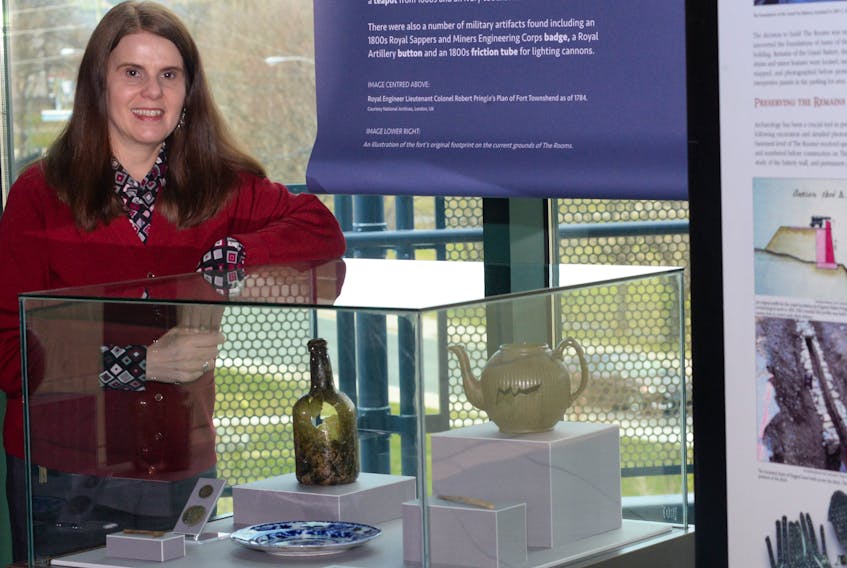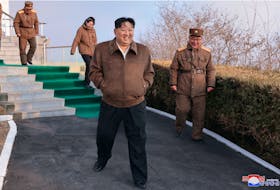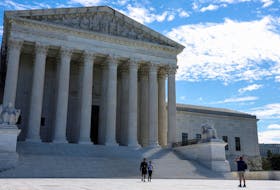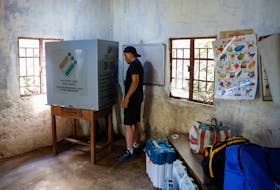ST. JOHN'S, N.L. — With The Rooms long settled into the landscape of St. John’s, the controversy surrounding the complex is little mentioned these days, as is the fate of the old footprint of Fort Townshend, which is years away from ever being a once-promised public focal point.
It would take multimillions of dollars to interpret the Grand Battery Wall and other features of the original Fort Townshend, which dates back to the late 1700s, as it remains the unfinished basement of the facility, with the remnants of the old fort protected by sandbags.
“It’s definitely on our bucket list that we need to do, and we want to do if somebody out there has the funds to get this started,” said Anne Chafe, The Rooms’ executive director of museums and galleries.
The project would need funding by an outside sponsor or sponsors.
A few items, such as a teapot, plate and badges, are currently included in a small public display, but that’s a minor portion of the tens of thousands of artifacts uncovered prior to The Rooms’ construction — most of them found in bits and pieces.
When The Rooms opened, Level Zero (the fort site) and Level Four remained unfinished. Level Zero, though, has no ventilation system or environmental controls. An exhibit that starts out with all that already in place can cost several million dollars and take three years to put together.
In a study by The Rooms, the interpretation of Fort Townshend fell low on the list while other projects — indigenous culture, the First World War exhibit sparked by the 100th anniversary of the Battle of Beaumont Hamel and more contemporary Newfoundland and Labrador history — were priorities when it comes to what outside benefactors wanted to fund.
In the 1980s, military heritage — such as that marked by Fort Townshend – garnered more attention, Chafe noted.
“It doesn’t seem to have the same cache it has today,” she said.
The Elinor Gill Ratcliffe Gallery on the fourth floor now takes the history of the province from the 1800s to the present day, with funding from philanthropist Elinor Gill Radcliffe, which leaves Level Zero the outstanding incomplete project.
The controversy surrounding the construction of The Rooms over the Fort Townshend site caused a major public stir in the early 2000s. A public interest group named the Friends of Fort Townshend was formed and there was a clamour to have the archives/museum/art gallery structure moved off the fort site before construction began.
In 2000, the then-Liberal government said it didn’t have the money to move the $40-million facility to preserve the site of the 18th-century British fort after spending several million dollars on site preparation work.
It was decided that the main level of the building would be raised off the ground by oversized concrete pillars and allow an active archeological site to operate once the building was complete. Features such as the battery wall and artillery barracks were sandbagged for protection.
When it was first announced in 1999, the Liberal government of the day declared The Rooms “would allow for an active archeological excavation inside the building, making it a rare and unique museum in North America for this type of archeological program.”
The area was to feature an 8,000-square-foot exhibit on the military history of the province and on the history of the Fort Townshend site and the Royal Newfoundland Constabulary, according to archived news releases about the project. Fort Townshend was constructed during the late 18th century to add to a defence system that protected Britain’s interests in the prosperous Newfoundland fishery.
But that viewable archeological interpretation is yet to be done, 14 years after The Rooms opened in 2005.
Twenty-six 18th- and 19th-century structures and/or features were uncovered and recorded by archeologists, according to the early news releases. More than 90,000 artifacts were conserved and catalogued, and remain in The Rooms’ vaults.
If The Rooms were to add interpretation of the fort, it would have to start from scratch, to make sure nothing was missed, Chafe noted.
The main staircase is ready to go, and the elevator goes down to the space.
Some features at The Rooms that mark the site include outside lighting of the outline of the fort.
Twitter: @BarbSweetTweets









